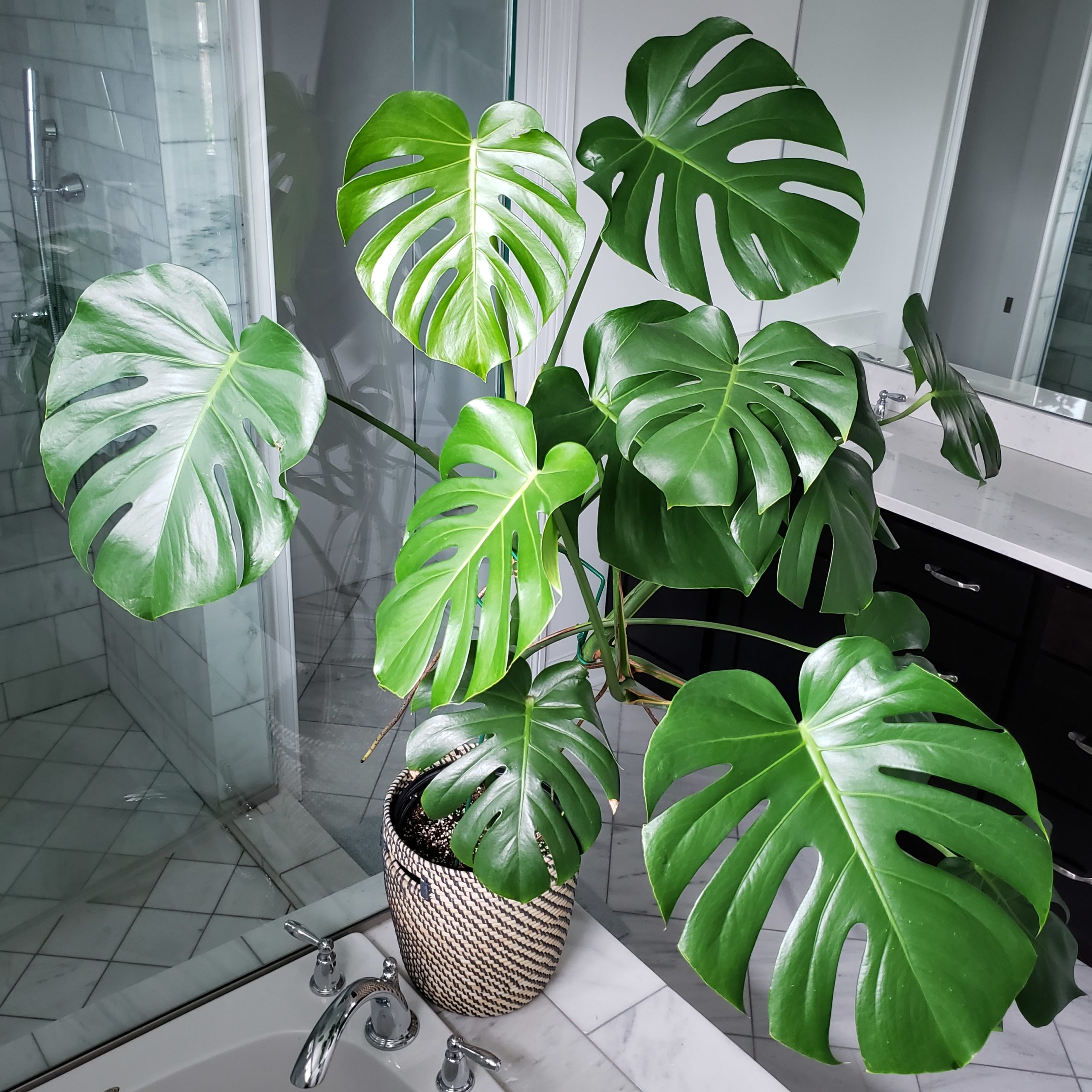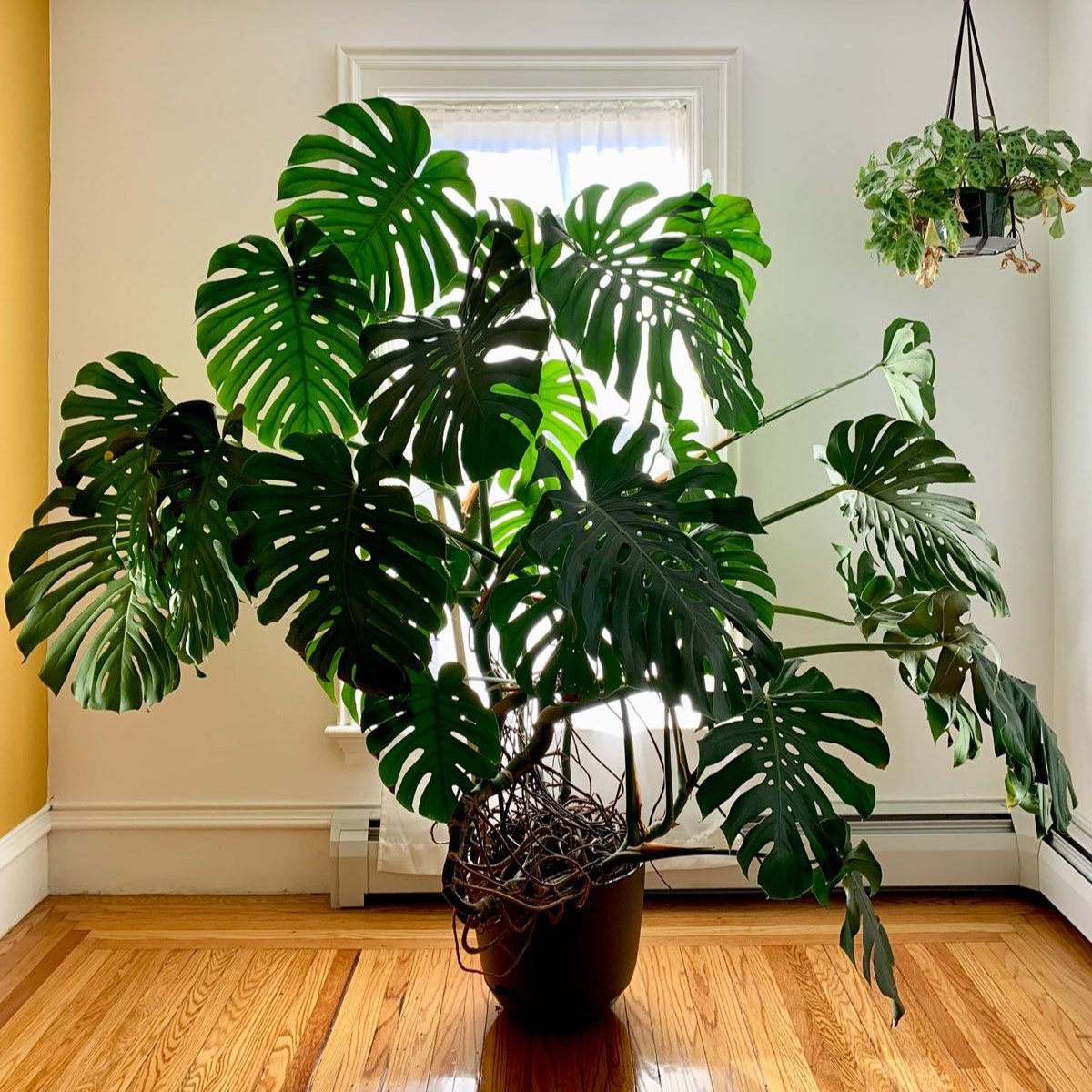The Allure of the Monstera: More Than Just a Pretty Leaf
You’ve probably seen it gracing the pages of home decor magazines or popping up on your friend’s Instagram feed – the magnificent Monstera. With its uniquely fenestrated leaves (that’s a fancy way of saying they have those cool splits and holes), it’s become a superstar in the houseplant world. But there’s so much more to this plant than just its trendy good looks. Let’s dig into the fascinating world of the Monstera.
A Peek into the Monstera’s Origins
To truly appreciate the Monstera, it’s helpful to know where it comes from. These plants are native to the tropical rainforests of Central and South America. Imagine a lush, humid environment with towering trees and dappled sunlight filtering through the canopy. That’s where Monsteras thrive, often climbing up those trees using their aerial roots. This jungle heritage explains a lot about their needs and their growth habits. They’re used to a bit of shade, plenty of moisture, and something to climb on.

Unpacking the Different Types of Monsteras
When people talk about Monsteras, the first one that usually comes to mind is Monstera deliciosa. It’s the classic, the one with those iconic split leaves and the potential to produce edible fruit (hence the “deliciosa”). But did you know there are other fascinating members of the Monstera family?
Monstera deliciosa: The King of the Jungle (in Your Living Room)
This is the big one, literally. Monstera deliciosa can grow to impressive sizes both indoors and out (though it stays more manageable indoors). Its leaves can get huge, and the fenestrations become more pronounced as the plant matures. You might also hear it called the “Swiss Cheese Plant” because of those holes. And yes, if you’re patient and provide the right conditions, it can even produce a fruit that tastes like a mix of pineapple, banana, and mango – though it takes about a year to ripen and should only be eaten when fully ripe as unripe fruit contains calcium oxalate crystals that can irritate your mouth and throat.

Monstera adansonii: The More Delicate Cousin
Often called the “Swiss Cheese Vine” or “Monkey Mask Plant,” Monstera adansonii has smaller, more delicate leaves with more prominent holes than splits. It’s a vining plant that looks fantastic trailing from a shelf or climbing a support. There are a few variations of Monstera adansonii, each with slightly different leaf shapes and hole patterns, adding to its appeal for collectors.
Monstera dubia: The Shingle Plant
This is a truly unique Monstera. In its juvenile stage, Monstera dubia has small, heart-shaped leaves that lie flat against a surface, like shingles on a roof – hence the name. As it matures and climbs, the leaves can change dramatically, becoming larger and developing fenestrations. It’s a fascinating plant to watch grow and transform.

Monstera borsigiana: Often Mistaken
Caring for Your Monstera: Keeping It Happy
Now that you know a bit about the different types, let’s talk about keeping these tropical beauties thriving in your home. While they’re relatively low-maintenance, they do have some specific needs.
Light: Bright, Indirect is Key
Monsteras love bright, indirect light. Think of the dappled sunlight filtering through the rainforest canopy. Direct sunlight can scorch their leaves, leaving unsightly brown patches. An east-facing window or a spot a few feet back from a south or west-facing window is usually ideal. If your plant isn’t getting enough light, you might notice leggy growth (long stems with few leaves) or a lack of fenestrations in new leaves.
Watering: Finding the Right Balance
Overwatering is a common mistake with Monsteras. They like their soil to dry out a bit between waterings. Stick your finger about an inch or two into the soil – if it feels dry, it’s time to water. When you do water, water thoroughly until water drains out the bottom of the pot. Make sure your pot has drainage holes! During the winter months, when the plant’s growth slows down, you’ll need to water less frequently.
Humidity: A Taste of the Tropics
Coming from humid rainforests, Monsteras appreciate higher humidity levels. If your home is particularly dry, especially in winter, consider using a humidifier, placing your plant on a pebble tray filled with water, or grouping it with other plants to create a more humid microclimate. You might notice crispy brown edges on the leaves if the air is too dry.
Soil: Well-Draining is Essential
Monsteras need a well-draining potting mix to prevent root rot. A mix that contains peat moss, perlite, and pine bark is usually a good choice. Avoid heavy, water-retentive soils.
Support: They Like to Climb
As mentioned earlier, Monsteras are natural climbers. Providing them with a moss pole, a trellis, or even a sturdy branch will encourage them to grow larger and develop more mature foliage with those characteristic fenestrations. Their aerial roots will latch onto the support as they grow.
Fertilizing: A Little Boost
During the growing season (spring and summer), you can fertilize your Monstera every 2-4 weeks with a balanced liquid fertilizer diluted to half strength. Hold off on fertilizing during the fall and winter when the plant is resting.
Propagation: Sharing the Love
Monsteras are relatively easy to propagate, usually through stem cuttings. Look for a stem with a node (the little bump where a leaf or aerial root grows) and snip it off. You can then root the cutting in water or directly in soil. This is a great way to expand your Monstera collection or share these beautiful plants with friends.
Common Issues: What to Watch Out For
While generally hardy, Monsteras can encounter a few common problems:
Yellowing Leaves: Often a Sign of Overwatering
If you notice the leaves of your Monstera turning yellow, it’s often a sign that you’re watering too much. Make sure the top inch or two of soil is dry before watering again.
Brown, Crispy Edges: Could Indicate Low Humidity or Underwatering
Brown, crispy edges can be a sign of dry air or inconsistent watering. Check the humidity levels and adjust your watering habits.
Pests: Keep an Eye Out
Like any houseplant, Monsteras can occasionally attract pests like spider mites, mealybugs, or scale. Regularly inspect your plant and treat any infestations promptly with insecticidal soap or neem oil.
Conclusion: The Enduring Appeal of the Monstera
The Monstera plant is more than just a fleeting trend. Its dramatic foliage, relatively easy care, and fascinating growth habits have cemented its place as a beloved houseplant for enthusiasts of all levels. From the classic Monstera deliciosa to the unique shingle plant Monstera dubia, there’s a Monstera to capture every plant lover’s heart. By understanding their origins and providing the right care, you can enjoy the beauty and tropical vibes these incredible plants bring to your home for years to come.
Frequently Asked Questions (FAQs)
1. Why aren’t the leaves on my young Monstera splitting?
Young Monsteras often don’t have fenestrated leaves. The characteristic splits and holes develop as the plant matures. Providing it with bright, indirect light and something to climb can encourage the development of these mature leaves over time. Be patient!
2. Can I put my Monstera outside during the summer?
Yes, you can move your Monstera outdoors during the warmer months, but be cautious. Choose a spot that is sheltered from direct sunlight and strong winds to prevent leaf scorch or damage. Gradually acclimate the plant to outdoor conditions.
3. My Monstera has aerial roots growing everywhere. Should I cut them off?
Aerial roots are a natural part of a Monstera’s growth and help it climb and absorb moisture and nutrients. It’s generally best not to cut them off. You can gently direct them into the soil or wrap them around a moss pole for support.
4. Is the fruit of Monstera deliciosa always safe to eat?
The fruit of Monstera deliciosa is only safe to eat when it is fully ripe. Unripe fruit contains calcium oxalate crystals that can cause irritation and a burning sensation in the mouth and throat. Ripe fruit will have a distinct aroma and the scales on the outside will start to lift easily.
5. How often should I repot my Monstera?
Monstera Plant
